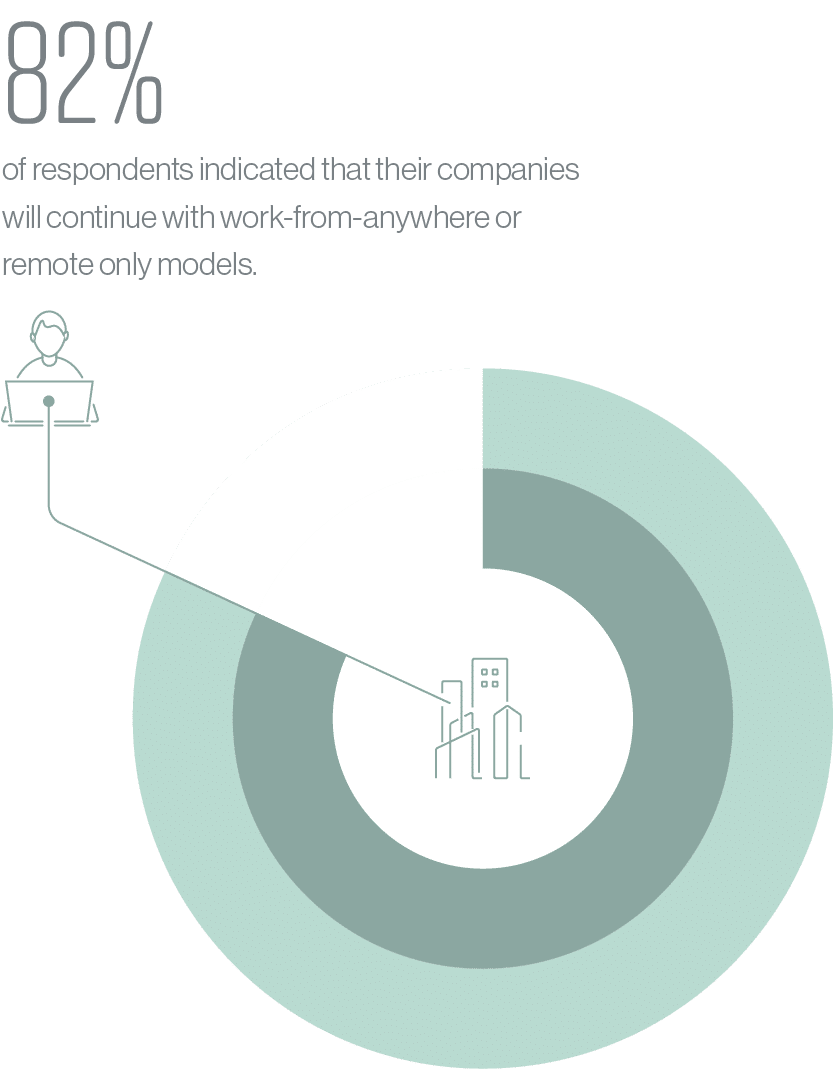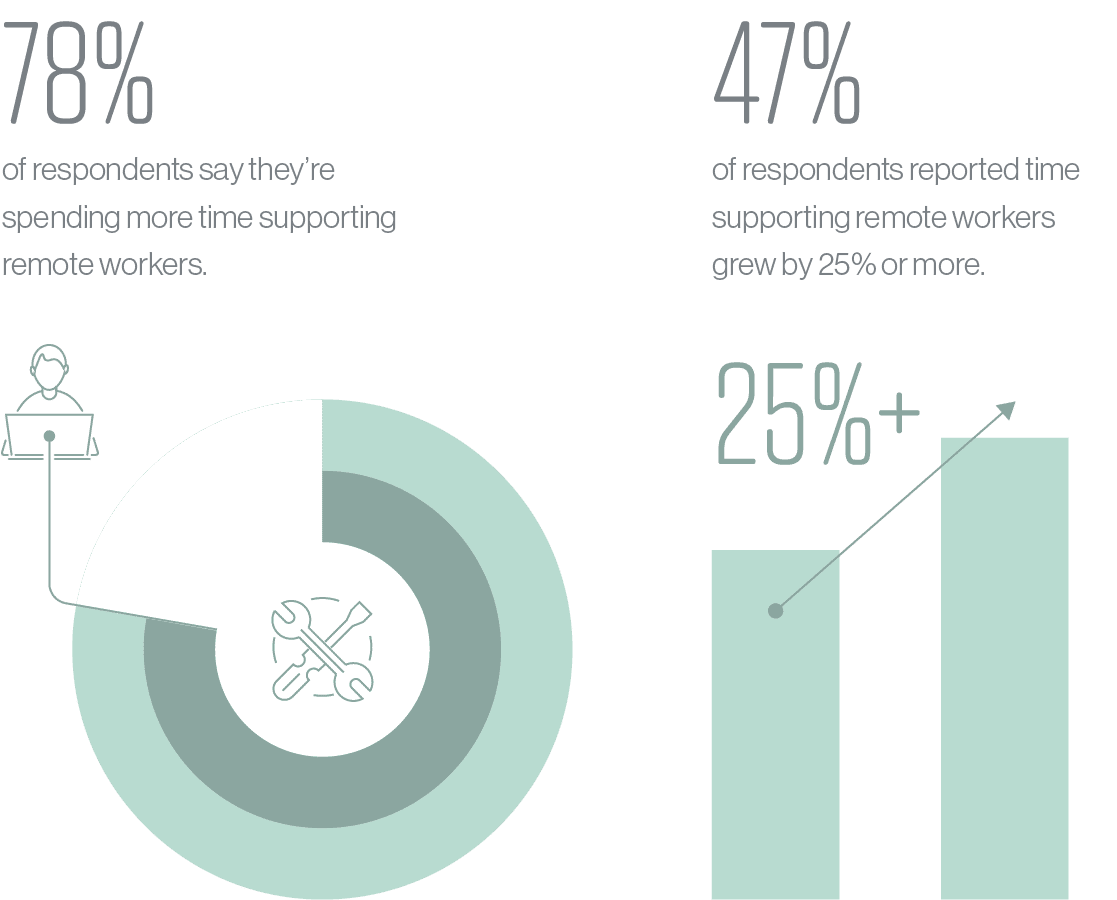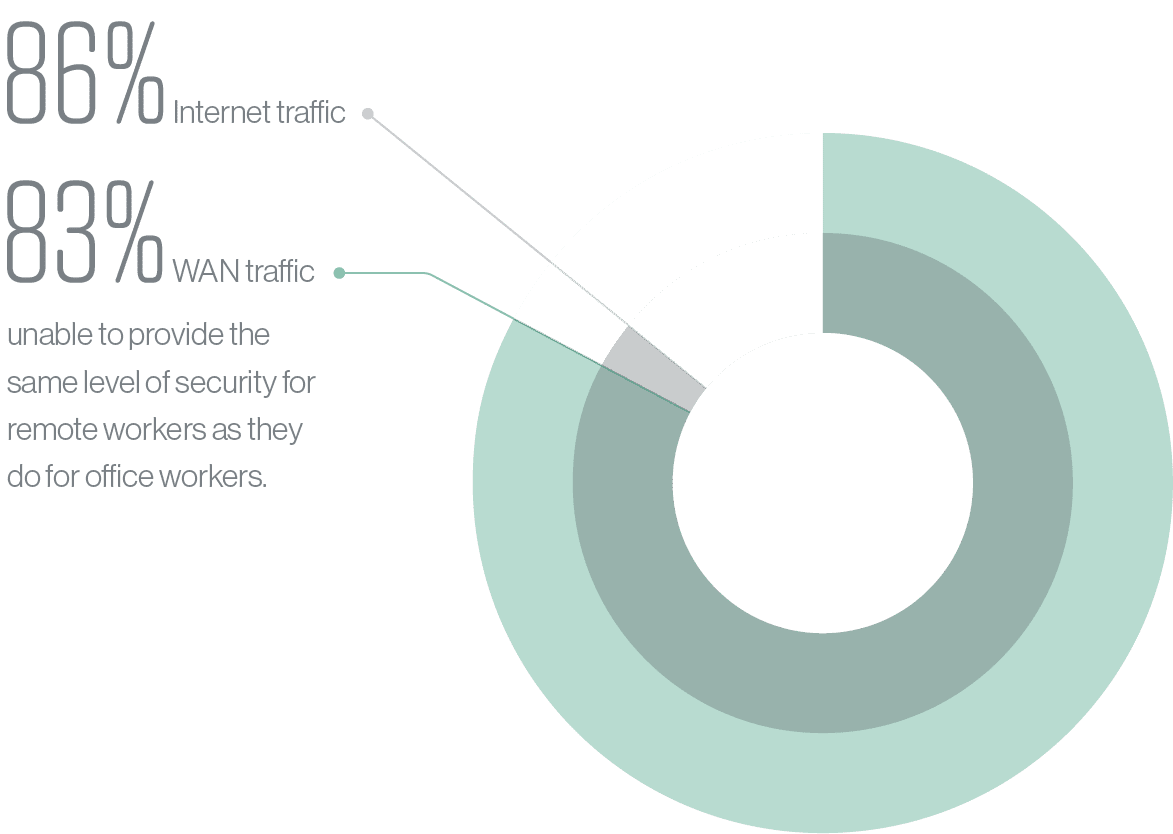User Complaints and IT Support Costs Soar as Companies Embrace Work-from-Anywhere
78% of enterprises report spending more times supporting their remote workforce since the pandemic, finds a new Cato Networks survey of more than 2,686 IT leaders
TEL AVIV, Israel, July 07, 2021 — Cato Networks, the provider of the world’s first Secure Access Service Edge (SASE) platform, released today the results of its “Work from Anywhere” survey. The survey found that despite the massive investment in remote access infrastructure during the COVID-19 pandemic, most companies continue to struggle supporting remote workers. In short, the deployed remote access technology fails to meet enterprise requirements, forcing support and helpdesk to compensate.
“Work from anywhere has shifted business focus from the place of work to the users and the work they need to do,” said Eyal Webber-Zvik, vice president of product marketing at Cato Networks. “This shift created a whole slew of operational and budgetary challenges for IT in service delivery, access optimization, and pervasive security that are designed around locations rather than people. We are now able to identify these issues and address them.”
How We Work Has Changed and So Has the IT Challenge
During the pandemic, enterprises had to quickly adapt to a work-from-anywhere business model, moving the workplace from the office to an individual’s remote location. Many enterprises chose to invest in their existing and known security platforms, particularly centralized VPN servers (42%). Many respondents (40%) indicated they backhaul remote access traffic today to a VPN server.
In the post-pandemic environment, 82% of respondents indicated that their companies will continue with work-from-anywhere or remote only models. This is reflected in their priorities post-pandemic. Providing secure Internet access everywhere continues to be the top priority for 67% of respondents.

“The pandemic has shown us that businesses are no longer tied to a specific office or location,” Webber-Zvik stated. “By implementing a work from anywhere model, businesses are transitioning to a more efficient and collaborative way of doing business, allowing them to better meet the needs of their customers, as well as their employees.”
The Hybrid Working Model Significantly Impacts Helpdesk and Support
But while a hybrid working model may be good business, the rush to implement remote access at scale has created significant problems for IT. 78% of respondents say they’re spending more time supporting remote workers; 47% of respondents reported time supporting remote workers grew by 25% or more.

This is particularly true for those respondents of legacy networks where remote traffic is backhauled to a centralized VPN server. In those environments, remote user complaints soared to 83% of respondents, versus 45% of respondents sending traffic local security appliances or services.
More specifically, respondents broke remote user challenges down into three areas — service delivery, application performance, and security:
Service Delivery: Remote users suffer in most cases when accessing services. More than half of respondents indicated that users complain about connection instability (52%) and poor voice or video quality (28%).
Application Performance: More than a third (36%) of respondents indicated that slow application response was the most dominant remote user complaint. For those that backhaul traffic, 30% said application performance for remote users was worse than in the office versus just 22% for those not backhauling traffic.
Security: Nearly half (44%) of respondents indicated they could not provide remote workers with the same level of security for all traffic as their office counterparts. And the vast majority — 86% for Internet traffic and 83% for WAN traffic — were unable to provide the same level of security for remote workers as they do for office workers.

Remote workers are being protected, predominantly by IPS (72%) and antimalware (66%) but rarely by Sandboxing (24%). Best practice for remote authentication — the use of SSO (Single Sign On) and MFA (Multi Factor Authentication) — is only being implemented by 33% of respondents, while 24% continue to rely on the weakest of approaches — username and password.
“Moving to a hybrid working model has not been easy for many IT departments,” Webber-Zvik said “It is a bigger problem than just scaling remote access infrastructure and if not done correctly, as we have seen from the survey responses, can be damaging to productivity.”
SASE Allows Enterprises to Easily Adapt to the New Working Environment
Enterprises that took the leap and embraced SASE experience fewer support challenges. This is because SASE treats remote users no differently than locations. All security and optimization services available to office workers secure and improve the remote user experience.
According to Gartner, “SASE will enable I&O and security teams to deliver the rich set of secure networking and security services in a consistent and integrated manner to support the needs of digital business transformation, edge computing and workforce mobility. This will enable new digital business use cases (such as digital ecosystem and mobile workforce enablement) with increased ease of use, while at the same time reducing costs and complexity via vendor consolidation and dedicated circuit offload. COVID-19 has highlighted the need for business continuity plans that include flexible, anywhere, anytime, secure remote access, at scale, even from untrusted devices. SASE’s cloud-delivered set of services, including zero trust network access, is driving rapid adoption of SASE.”1
Enterprises that have adopted SASE are able to instantly connect and secure remote users everywhere,” Webber-Zvik said “Instead of spending weeks or months updating legacy infrastructure and updating remote workers software applications, SASE enables IT departments to install new applications and security protocols in minutes across the entire network. This not only saves time, but it also reduces overall costs and ensures adoption across all platforms and remote access points.”
To learn more about the survey and how Cato addresses the challenges posed by widespread remote access, read our blog.
1Gartner, ‘Hype Cycle for Network Security, 2020’, Pete Shoard, June 30, 2020
About Cato Networks
Cato is the world’s first SASE platform, converging SD-WAN, network security, and Zero Trust Network Access (ZTNA) into a global, cloud-native service. Cato optimizes and secures application access for all users and locations. Using Cato SASE Cloud, customers easily migrate from MPLS to SD-WAN, optimize connectivity to on-premises and cloud applications, enable secure branch Internet access everywhere, seamlessly integrate cloud datacenters into the network, and connect mobile users with Cato SDP client and clientless access options. With Cato, the network, and your business, are ready for whatever’s next. To learn more about how Cato can help you, visit https://www.catonetworks.com.









